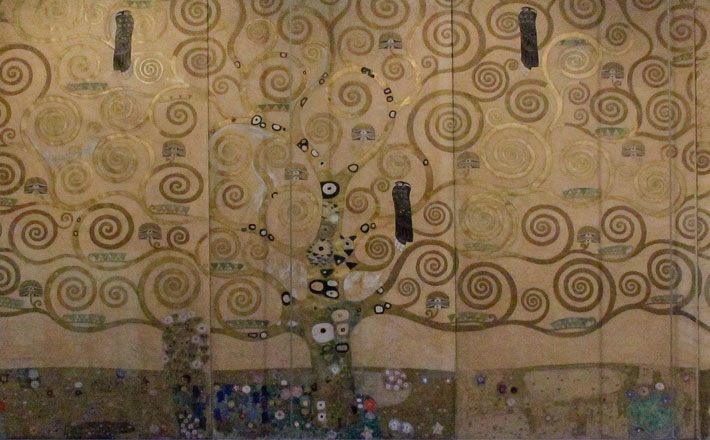Commentary on Revelation 21:10, 22—22:5
In this book of so many visions, we arrive at the final vision; final not only because it is the last in this book, but final because here we see the ultimate goal to which God will bring the world.
John gives us a more detailed presentation of the same city that he had glimpsed in 21:2. It is often stated that the New Jerusalem has no temple, but that is not quite right. It has no separate structure which could be identified as a temple, because God and the Lamb are the temple in this city (verse 22).
The declaration here is not that no temple is needed, but that God’s own, unmediated presence is where the people come to worship (see John 2:19-21), and that divine presence fills this city. The faithful had been promised that they would be pillars in God’s temple (3:12), and here we find that they will in fact dwell in God’s immediate presence. We have already been told about this city as the bride of the Lamb (21:2); now we are shown how the people and God will live together in that intimate relationship.
Other apocalyptic texts such as 4 Ezra 7:60-61 declared that salvation would be a small and exclusive club in the end (“I will rejoice over the few who shall be saved…and I will not grieve over the multitude of those who perish”). John’s vision, by comparison, is startlingly expansive. After the last 2 battles described in Revelation (19:15, 19-21; 20:8-9), we might expect that we had seen the last of the nations. Yet here they are, walking in the light of God’s New Jerusalem.
Perhaps even more striking is that the kings of the earth will bring their glory into Jerusalem, coming finally to proper worship (rather than being led in as war captives, as Isaiah 60:11 portrays). We last heard about the kings of the earth in 19:19, where they were assembled against the Lord. In 17:18, Babylon ruled over the kings, and in 18:3 they were the ones who had committed fornication (idolatrous worship and economic/military oppression) with the whore of Babylon. We had no reason to hope for the kings and the nations, and yet here they are–a sign of God’s amazing grace.
Just because the nations and kings are coming is no reason to worry about a future repeat of oppression and injustice. There will be no need for security systems in this city: no bars on the windows, no locked doors, no alarms. The gates of the city will be open always. Of course everyone would expect the gates to be open during the day unless the city were under threat, and all threats have been removed. The surprise is that there will be no need to close the gates at night, because there is no night, since God’s own light shines in the city. Anyone can come as they wish, none will feel insecure, and all are welcomed.
Or are they? Verse 27 mentions some who will never enter the city. But where did such people come from, since we have already seen the resurrection of the dead and the final judgment? We should notice that in this verse the alternative described to the “unclean” is not “only those who live righteously,” but “only those written in the Lamb’s book.” This is a reminder that entry to this city is by God’s grace. It is also a reminder that, by God’s grace, those written in the Lamb’s book live a life that is appropriate for this city. The promise that nothing unclean will enter, in the end, is the promise that God will remove all uncleanness from us all. As we will see, God provides healing for the nations (22:2), healing from the idolatry and falsehood that had infected them. God’s drawing of the kings and nations to God’s self, to the holy city, is no threat; the uncleanness that had led to oppression, violence, and evil will stay removed forever.
The river of life in 22:1-2 is based on Ezekiel 47:1-12, where the river flows out of God’s temple. In Revelation’s New Jerusalem there is no temple building, and so the river flows from the throne of God, flows with life from the presence and the ruling power of the Lord of all. The old serpent has been dispensed with (20:2, 10), and the tree of life flourishes among the people again. In Ezekiel, the river was lined with all kinds of trees, but here there is only one, the one that matters, the tree of life lost with Adam’s and Eve’s sin. In Ezekiel’s vision, the leaves were for healing (of Israel), but here they are for the healing of all the nations. Here there is nothing cursed (verse 3). Paradise is fulfilled in this city.
The profound images have piled up as high as this city’s walls, but the climax of it all comes in verse 4. The redeemed will see the face of God. Exodus 33:20 had declared this impossible. One could not see God’s face and still live. But here, by God’s grace, humanity reaches its intended goal and completion, to dwell in God’s presence.
This is the promise of life with God brought out of the long story of human sin, rebellion, and suffering. From God comes light; from God comes the tree of life; from God’s throne flows the water of life; God is the temple, sanctifying the entire community; and God’s own presence is given. We know that presence in the life, death, and resurrection of Jesus. We know that presence of God at the font, and the table, and in the proclamation of good news. We know that presence of God dimly reflected in our own imperfect communities. This text holds before our eyes the goal to which God is bringing all of human life, and calls us on to that reality.


May 9, 2010